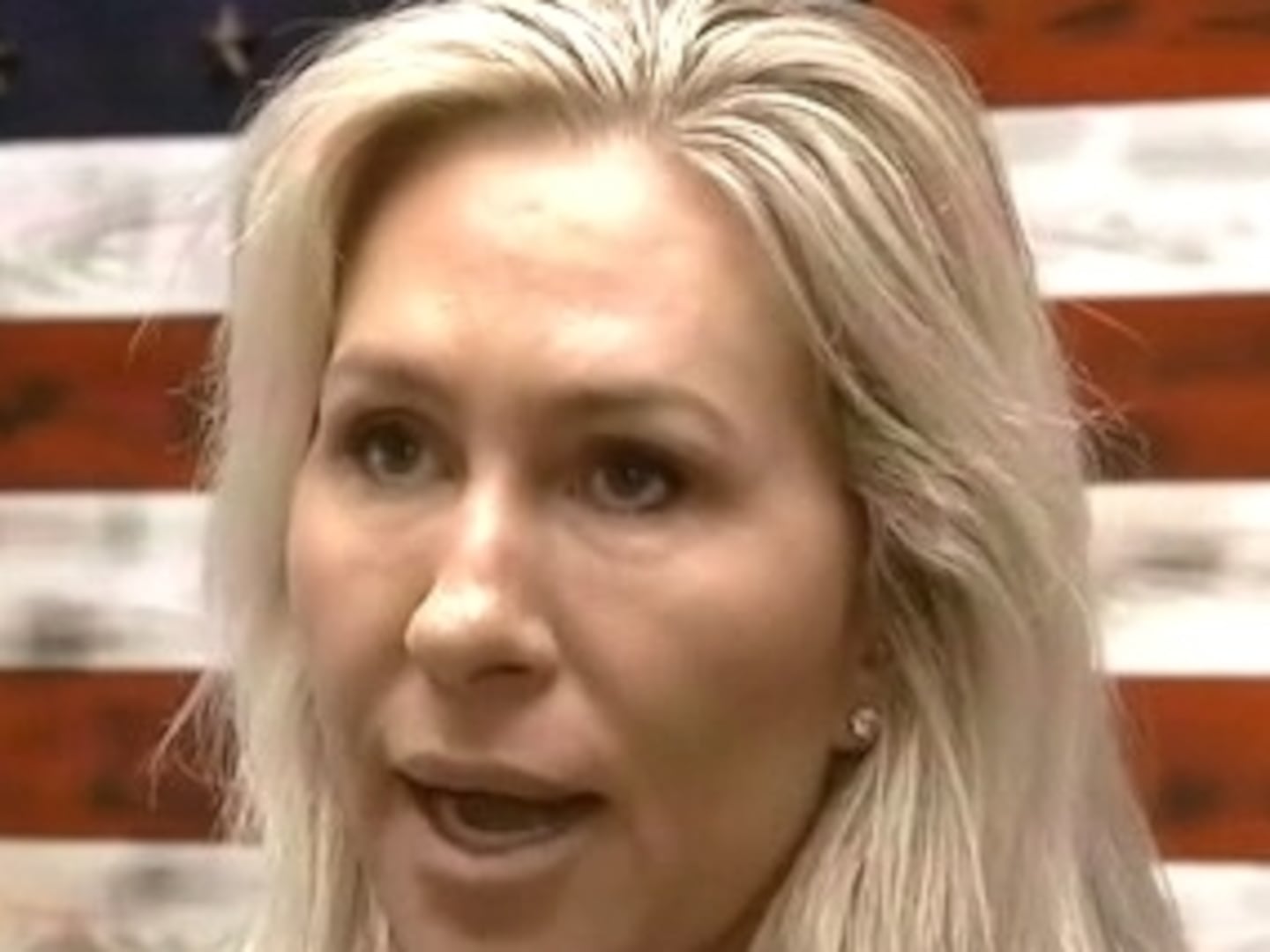Gather round, folks. Today’s comedy class runs 30 minutes and takes place on the 41st floor on the Mandarin Oriental Hotel in New York. That’s where Kristen Wiig, the Saturday Night Live comedian and star of the new movie MacGruber, has agreed to meet us and explain why, and how, she is funny. It’s clear by now that Wiig is the heartbeat of SNL, its funniest trouper by a Fey- or Ferrell-like margin. But as we’ll see, beneath those big eyes lies a very strange and subversive mind.
“I tend to play crazy women in their mid-forties,” Kristen Wiig says. “A lot of short-haired women with fancy sweaters.”
First to MacGruber. Wiig plays Vicki St. Elmo, pal to the hapless munitions expert MacGruber (Will Forte). On Saturday Night Live, “I just count down,” Wiig says, curled up on an ottoman and wearing the hotel’s giveaway slippers. Meaning, as a bomb ticks toward detonation, St. Elmo turns to her idiotic pal and screams, “Five seconds, MacGruber!” And then she watches helplessly as MacGruber lets the bomb explode.
Kristin Wiig as Sue
In the movie, we learn a few things about St. Elmo: that she left crime-fighting for a singing career, and that MacGruber once walked down the aisle with her best friend, Casey ( SNL vet Maya Rudolph), who was, it is almost needless to say, blown up by a bomb. (There is a wonderful look of horror on St. Elmo’s face when she is covered with her friend’s entrails.) But these struggles only endeared St. Elmo to her man. “She’s like totally there with him,” Wiig says. "She’s very loyal."
They fall in love, of course, and in the movie’s most memorable scene, the relationship is consummated at St. Elmo’s house. The scene was filmed on a sweltering day last August in Albuquerque, New Mexico. It was Wiig’s 36th birthday. “Will was sweating all over me,” Wiig says, adding, “It sounds creepy because I'm talking about a love scene, but it was fun because Will is like my brother.”
Director Jorma Taccone, who wanted to squeeze as many “pumps” into the scene as the MPAA would allow, adds that he was aware of the near-incestuous vibe the Forte-Wiig pairing had created. “That didn’t stop us from asking for take after take,” he says gleefully.
Wiig sort of wandered into comedy. It wasn’t until her late 20s that she saw a performance of The Groundlings, the Los Angeles troupe that begat Phil Hartman and several other SNL players. “I saw my first improv show there,” she says, “and I had never even heard of improv—I didn't know anything about it. And I thought, Oh my god, that’s what I want to do.” She enrolled in the Groundlings’ bootcamp of writing and acting. The troupe encourages performers to go big, but according to Melinda Hill, an actor and comedian who went to the school with Wiig, Wiig was notable for being “so believable, real, and simple”—she tended to go small.
Wiig and Hill wrote “ Confessions of a Tooth Fairy”, a wonderful bit in which two junior fairies struggle with the demands of the job. (“You take the tooth and you leave the money…”) Hill says Wiig was almost ridiculously sweet: At a performance, her colleagues would typically find cards she had left for them backstage wishing them luck.
Wiig aced her 2005 SNL tryout for Lorne Michaels by doing impressions of Drew Barrymore, Björk, Jessica Simpson, and Jane Pauley. Michaels would later say Wiig was the rare SNL player who arrived with a comic persona fully formed.
So what’s her comedy? Though she does a solid Nancy Pelosi, Wiig has mostly bypassed political shtick, the main event of our politics-drenched moment. No, the comedy Wiig writes for herself—and she writes almost all her sketches—is…demented. “Her natural state of humor is so much weirder than you’d expect,” says Taccone, who’s also a writer on SNL.
Nancy Pelosi
Take a sketch based on the old Lawrence Welk Show, in which Wiig and three others play a team of singing sisters. The first three are blushing beauties, sought after by men. But Wiig’s character would be, she and a co-writer thought, “different.” By the time the sketch aired, Wiig had a receding hairline, a snaggletooth, and toddler-sized hands. It’s a freaky, terrible joke—deformity played for laughs. It’s also really, really funny. And it builds through the sketch, the camera proceeding down the chorus line until you have to see Wiig’s face again.
The Lawrence Welk Show
“It’s fun to play the person at the party who no one wants to talk to,” Wiig says.
Wiig’s creations tend to be passive-aggressive types. They are people who are consigned to the edges of polite society: to the Target checkout stand, defensive driving class, or a McCain campaign rally. They are women like Sue, who loves surprises but never gets a surprise party thrown for herself; or Aunt Linda, who reviews movies with the grating notion that no one has ever cared what she thought about anything. A Wiig character invariably has a captive audience—including us—which they pummel with their own anxiety.
Aunt Linda
That’s my overwrought take, anyway—Wiig is reluctant to intellectualize her bits. “I don’t know how to talk about myself like that, but I guess I’m always drawn to stranger, weirder things,” she says. She will allow, “I tend to play crazy women in their mid-forties. A lot of short-haired women with fancy sweaters.”
Like Tina Fey before her, she has inevitably become a brainy sex symbol—the latest woman, we are told in breathless magazine copy, who is both funny and sexy. (Every time an actress possesses this potent combination, it is like America has re-discovered the atom.) If there’s a complaint about the Wiig Era of SNL, it’s that she has come to dominate the show. The Times reported she was in every sketch of an episode but one in 2008 season; New York magazine’s Vulture blog found she made far more appearances in 2008-2009 than any other not-ready-for-primetime-player. “Does she have some kind of strange power over Lorne Michaels?” wondered one NBC.com commenter.
Wiig brushes off the charge, saying that of the 40 sketches that get pitched each week, only 12 make it to dress rehearsal, and still fewer of those make it to air. She says she could hardly dominate the show even if she wanted to. The likely alternative explanations are that a) SNL is in a bit of a fallow period, and the producers are rolling out Wiig like they used to Will Ferrell; b) Wiig is actually a generous team player—if she’s not the star of a bit, she’s game to take a St. Elmo-style bit part, like Phil Hartman was years ago. Wiig has gotten so famous so fast that “she could be a really demanding person if she wanted to be,” says Taccone. But he says Wiig is up for small roles, too.
“There have been many weeks where I’m like, ‘I’m done,’” Wiig says. “‘I’ve done everything I can on the show. I’ve done every voice, I’ve done every character, I don’t have any more ideas.’ And then you just sit and write and you keep coming up with more stuff.
More often than not, that stuff is blessedly demented.
Bryan Curtis is a senior editor at The Daily Beast. His story about his grandfather’s softball career is in The Best American Sports Writing of 2009.






